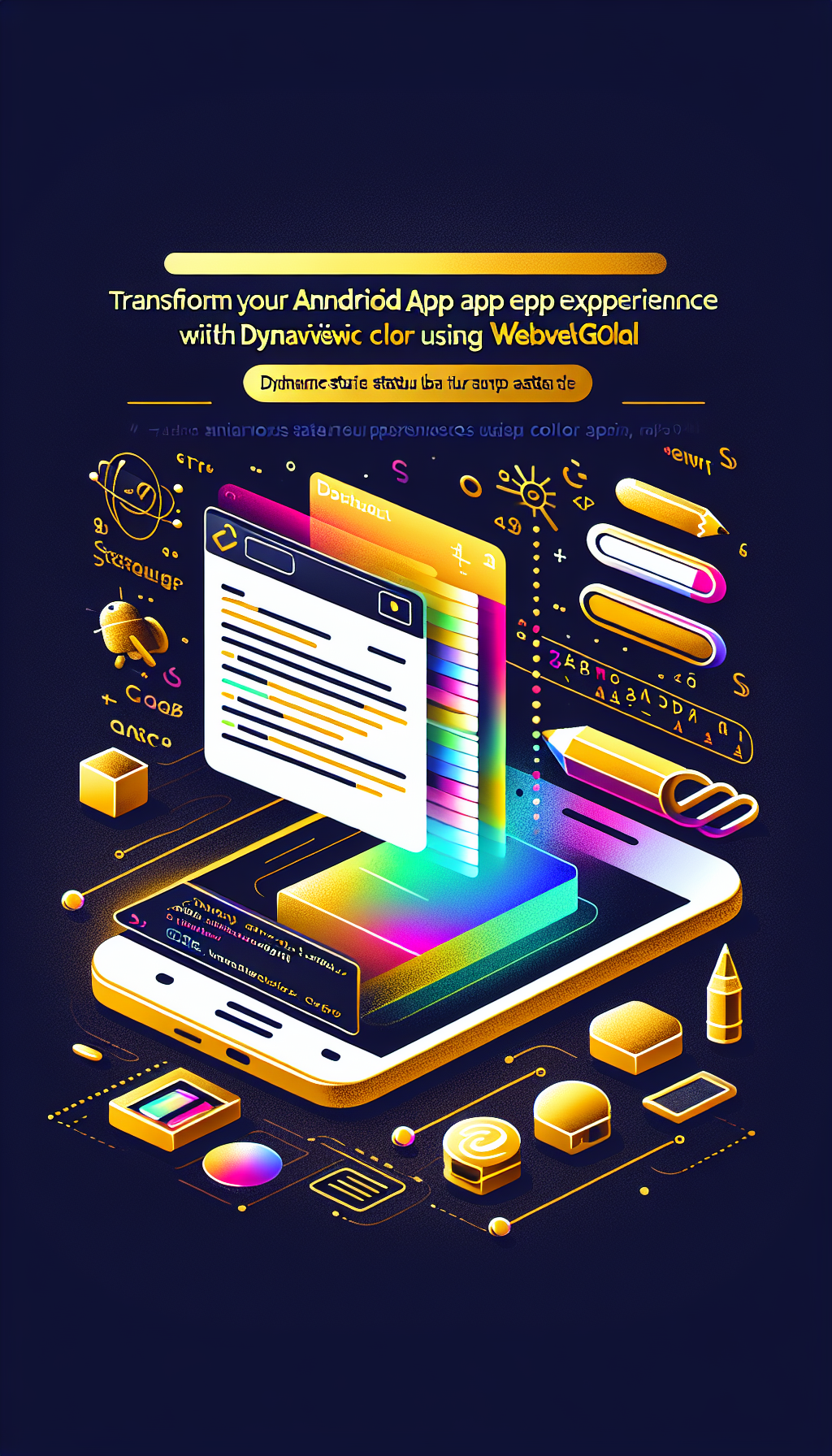
In the ever-evolving world of mobile applications, user experience is key. Every pixel on the screen counts, and a seamless, visually appealing interface can enhance the way users interact with your app. One often overlooked but crucial aspect of an app’s interface is the status bar. Thanks to advancements in technology, developers can now dynamically change the status bar color in Android apps using the Dynamic Status Bar Color API. In this post, we explore how you can transform your Android app experience by implementing this feature effortlessly using WebViewGold.
Why Pay Attention to the Status Bar?
The status bar is a constant component of any Android device, offering essential system information like battery life, time, and notifications. It stands at the top of the screen regardless of what application is running. While it may seem like a minor detail, its color can significantly impact the user’s overall experience. A status bar that blends harmoniously with the app’s theme can make the interface feel more coherent and engaging. Dynamic customization allows developers to adjust the status bar color to match specific pages or actions within the app, enhancing visual appeal and user immersion.
Introducing Dynamic Status Bar Color API
Android’s Dynamic Status Bar Color API allows developers to modify the status bar’s color programmatically. This means you can adjust the status bar to complement the aesthetics of different app sections dynamically, based on user interactions or displayed content. This feature not only elevates the design but can also be used to communicate context to the user effectively.
Leverage WebViewGold for Seamless Integration
Integrating sophisticated features like a dynamic status bar can sometimes be challenging, especially if you’re converting a website into an Android app. Enter WebViewGold, a powerful tool designed to simplify this process. With WebViewGold, you can convert any website into an Android app quickly and easily, without extensive coding knowledge. More impressively, WebViewGold supports the integration of Android-specific APIs, including the Dynamic Status Bar Color API.
Steps to Implement Dynamic Status Bar Color with WebViewGold
1. **Setup Your WebViewGold Project**: First, download WebViewGold and follow the instructions to set up your new project. The intuitive interface ensures your website-to-app conversion happens seamlessly.
2. **Customize Your Theme**: Within the WebViewGold template, navigate to the configuration files where you can implement changes to the status bar color for different app views. This control allows you to define colors based on user activity or page type.
3. **Utilize Android’s API Features**: Take full advantage of Android’s native capabilities by integrating the Dynamic Status Bar Color API. WebViewGold provides examples and support documentation to help you leverage these features effectively.
4. **Test Across Devices**: Ensure your app functions consistently across various Android devices. WebViewGold fosters compatibility, helping you maintain high quality across screen sizes and resolutions.
5. **Deploy with Confidence**: Once satisfied with your customizations and testing outcomes, proceed to publish your app. With WebViewGold, you’re assured of a professional-grade Android app ready to meet users’ expectations.
Enhance User Experience with Minimal Effort
By using WebViewGold, not only do you streamline the development process of converting a website into a full-fledged Android app, but you also gain the ability to incorporate advanced UI features like dynamic status bar color changes. This combination of simplicity and sophistication allows even those with minimal technical expertise to create professional-quality apps that captivate and retain users.

Leave a Reply